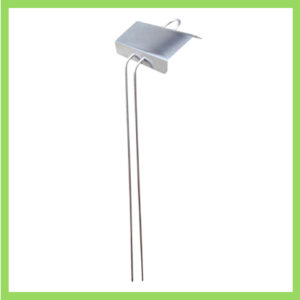As You Identify Your Plants You Build Appreciation for Local Vegetation and Wildlife
 If you’ve ever taken a stroll through a Conservation area or park, you probably noticed at least one section that was entirely devoted to native flora. These plots of ground are important as many regions of the country are experiencing the growing disappearance of native plant life. Yet, you don’t need to be a professional conservation agent in order to help native plants maintain a foothold in your area. Instead of using non-native decorative plants in your landscape design, consider incorporating plants which are indigenous to your area. Then, identify your plants with garden markers to encourage others to do the same.
If you’ve ever taken a stroll through a Conservation area or park, you probably noticed at least one section that was entirely devoted to native flora. These plots of ground are important as many regions of the country are experiencing the growing disappearance of native plant life. Yet, you don’t need to be a professional conservation agent in order to help native plants maintain a foothold in your area. Instead of using non-native decorative plants in your landscape design, consider incorporating plants which are indigenous to your area. Then, identify your plants with garden markers to encourage others to do the same.
Why Native Plants
Native plants require far less maintenance compared to non-native ones. In general, they will require less water, less pesticide treatment and less fertilizer. Native flora is well-adapted to your region so it will often be more disease-resistant as well. Thus, a big reason to Go Native is that it means the plants will grow well without much work and less chemicals are being mixed into the soil.
Who Will Enjoy Your Native Landscape
Since adding native plants into your garden will actually be a restoration project, you can expect your native flowers, grasses and shrubs to be attractively in sync with your surroundings. Not only will you enjoy the harmony a native garden provides, but the smaller creatures which promote healthy gardens will be likewise thrilled. Insects (think pollinators like bees and butterflies), wildlife and even beneficial microorganisms will thrive in a native environment. You, your visitors and tiny animal life will all enjoy your native garden.
What to Plant
A native garden will resemble a hothouse garden in the sense that you still need to consider shade, sun and soil when planning where to position each plant. And, like a non-native garden, you’ll need to spend time initially training out weeds and waiting for plants to become firmly established. Use markers to identify your plants as you put them in the ground to avoid confusion when it comes time to pull weeds. However, once you’ve gotten things on their way, your native garden will flourish with much less care than the cultivated non-native variety.
Where to get the Best Plant Markers
Your native landscape will use less water, require fewer chemicals and encourage healthy biodiversity. You want to celebrate this with quality plant markers to identify your plants. The best plant markers should be able to read clearly and should stand up to all kinds of weather conditions. That’s exactly what you’ll get when you order Kincaid Plant Markers. Our markers are used in official botanical gardens and other public venues and are valued by serious gardeners everywhere. Start your own native garden movement and do it with Kincaid Plant Markers.

A Gardening Resolution: Incorporating and Identifying Native Plants – Kincaid Plant Markers
[…] will be equally interesting and visitor-worthy when you introduce native plants. Furthermore, identifying native plants helps grow an appreciation for what makes your part of the country distinct and […]
Your Own City Garden: Make a Living Wall, Then Identify Your Plants | Kincaid Plant Markers
[…] planting a garden when space is limited. A little bit of space, a little imagination and markers to identify your plants are all you need to transform cinderblock into your own secret […]